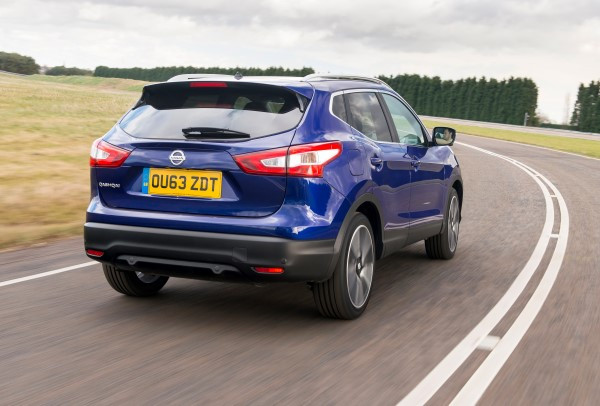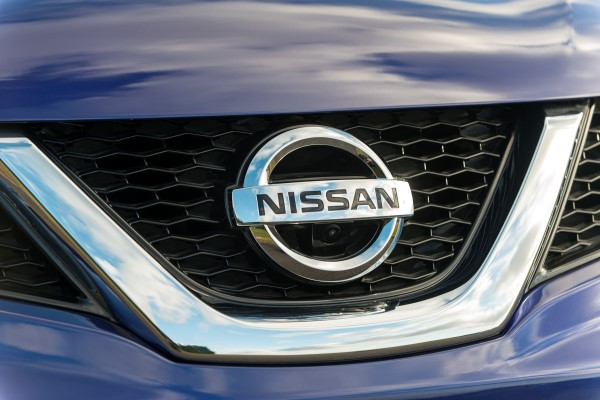New Nissan Qashqai vs Kia Sportage – Full Comparison
May 20, 2014 by Antony Ingram

Nissan pretty much started the current crossover boom with the original Qashqai, back in 2007.
Oh sure, there had been similar attempts before – the original Toyota RAV4 was as much car as it was off-roader, and if you really want to plunder history then the much-maligned Talbot-Matra Rancho of the 1970s trod worryingly similar ground to today’s vehicles.
But the Qashqai became a best-seller, and since its introduction no self-respecting car manufacturer can do without at least one crossover in their range. Car-like handling and economy with off-road inspired styling – it’s what the people want.
The new Nissan Qashqai is a popular car with carwow readers, but Kia’s Sportage isn’t far behind. But if you’re in the market for a new crossover, which should you buy? Let’s look at the details…
Styling
That most subjective of criteria, both the Nissan and the Kia have merit. Nissan’s design is newest, and its sharply-creased bonnet with V-shaped grille is finding its way onto various Nissan products as we speak.
The Qashqai’s frontal aspects are probably its best, with neat daytime running lights and bonnet and bumper designs that do well to hide the Qashqai’s surprising size. You also get neat alloy wheels and a much curvier body than Qashqais of old.
Where it lags a little is at the rear, which isn’t particularly original – in fact, we’d say it looks a lot like Mazda’s CX-5. And in profile, there’s more than a hint of Hyundai ix35.
The ix35 is actually the Kia Sportage’s Korean cousin, but we think the Sportage has the neater lines. It’s now one of the older crossovers on sale but Kia kept it simple and the neat, crisp lines have paid off – it’s ageing well. It can look a little tall and narrow from some angles and some may find it boring next to the sportier Qashqai, but there’s still much to like.
Interior and practicality
Both manufacturers have played it safe with their cars’ innards. Where each displays some flair from the outside, the Qashqai and Sportage interiors are a little more sombre.
That’s not to say they aren’t nice places to spend time though. The Qashqai’s is nicest, with a high-quality feel not far removed from certain German brands, with the added peace of mind of Japanese construction standards. Well, Anglo-Japanese – the Qashqai is assembled at one of Europe’s most productive car plants, at Washington in the North East.
Leg and headroom front and rear is good, though rear seat space is no better (nor any worse) than most rivals. The optional glass roof can also restrict headroom, but you’ll hardly be scrunched up in your seat. There’s a decent boot too, at 430 litres, with under-floor storage and a nice flat area for loading the boot.
The Sportage lacks the Nissan’s interior quality and like the Nissan, isn’t the most stylish of spaces. But it’s simple and uncluttered, like all modern Kia interiors. It’s also spacious front and rear, though a car full of six-footers may find it a little tight. The boot beats the Qashqai’s though – there’s 564 litres of space with the rear seats in place.
Driving
The Qashqai used to attract plaudits for the way it drove, with a real car-like feel and surprisingly sharp handling. It’s no longer as nimble these days, but few typical customers are likely to notice, or indeed care.
Much more important is the Qashqai’s excellent ride and refinement. Reviews praise each, with suspension that soaks up the worst bumps and jiggles and little wind or tyre noise. The suspension actually uses clever electronics to minimise pitching motions with dabs on the brakes – preventing too much rocking fore and aft over speedbumps, for example.
The Sportage features no such electrickery, and not much driving fun either. The steering is described as “numb”, though body roll is kept to a minimum. More of an issue is the ride quality, which can become fidgety – particularly on larger wheel and tyre options.
It is, however, a nice easy car to drive, with light controls. Refinement isn’t bad either, but narrow windows and enormous C-pillars at the back of the car mean visibility isn’t as good as the Qashqai – so make sure you double-check those blindspots on the motorway and in town.
Engines
Each car uses a range of familiar engines, though the Nissan does bring a fairly new petrol unit to the party. That’s the 1.2 DiG-T, a turbocharged four-cylinder petrol drafted in to replace the old 1.6 non-turbo petrol. It does the job well – performance is decent, it’s listed at 50 mpg on the European combined cycle, and the engine is incredibly refined – it’s nearly inaudible at idle.
The Qashqai’s other units are both diesel. On paper, their 1.5 and 1.6-litre capacities seem surprisingly close together, though there’s a decent performance and economy gap between each to justify their similarities. The 1.5 dCi develops 110 PS and hits 74.3 mpg (with zero-rate VED), while the 1.6 pumps out 130 PS, reaches 64.2 mpg and costs you 30 a year in tax. A CVT auto is optional. Each diesel is pretty refined – they’re the same units used to great acclaim in a number of Renaults, too.
Kia’s engine range also comprises a petrol and two diesels, though the 1.6 petrol isn’t quite as sophisticated as the turbocharged Nissan. We’d not recommend the petrol – it’s no slower than the petrol Nissan (actually, a little quicker) but costs more to tax and only does 41.5 mpg officially.
The 1.7 and 2.0-litre CRDi diesels are a better bet, though economy lags the Qashqai’s diesels. The 1.7 CRDi is best, at 54.3 mpg. If you want performance, it takes a top-end 181 PS 2.0 CRDi to match the quickest Qashqai – 9.5 seconds to 60, here – but economy is pretty poor at 46.3 mpg.
Value for money and running costs
If you reduce it to the bottom line, then Kia’s car is the victor – its 17,500 entry price undercuts the Nissan’s 17,995. That model, the 1.6 GDi petrol in ‘1’ trim, is also cheaper to insure – group 14E beats the Qashqai 1.2 DiG-T Visia’s 17E.
Kia also wins the warranty wars, with seven years and unlimited miles, to Nissan’s standard three years or 60,000 miles. For peace-of-mind, that’s hard to beat.
However, Nissan’s equivalent models are a great deal more economical than Kia’s offerings. As a result, they’re also cheaper to tax – there is no VED-free Sportage.
Both cars are well-equipped as standard – ‘1’-level Kias get cruise control, Bluetooth and iPod connectivity and a hill start assist, while Visia Qashqais come with CD player and USB Bluetooth connectivity, cruise control and speed limiter, and aircon. But Nissan does have flashier options on higher trim levels and realistically, pricing is close enough to make it the better value choice.
Verdict
The Kia Sportage is a great car with a solid wowscore of 7.7 out of 10, as we write this. But the Nissan Qashqai, with its wowscore well into the nines, has to win this battle.
It’s the cheaper car to run, even considering Kia’s warranty and insurance benefits, and lacks nothing in performance to the Kia – yet it’s also more refined and better to drive, with a smoother ride.
Kia hits back with the bigger boot, neat styling and generous equipment levels, but there’s a reason the Qashqai has sold as well as it has all these years – it simply does most things very well indeed. We awarded it a full 10/10 in our first drive review, and while it won’t set enthusiasts’ hearts a-racing, it’s just about the perfect family car.
carwow lets you compare multiple offers from the best Nissan and Kia dealers across the UK in just a few simple clicks. See how much money you could save by heading to our Nissan Qashqai dealsand Kia Sportage deals pages!
You should also check out our full Kia Sportage review here, and the Nissan Qashqai one.
Looking to move upmarket? Check out our Volkswagen Tiguan vs Audi Q3 vs BMW X1 comparison.



























